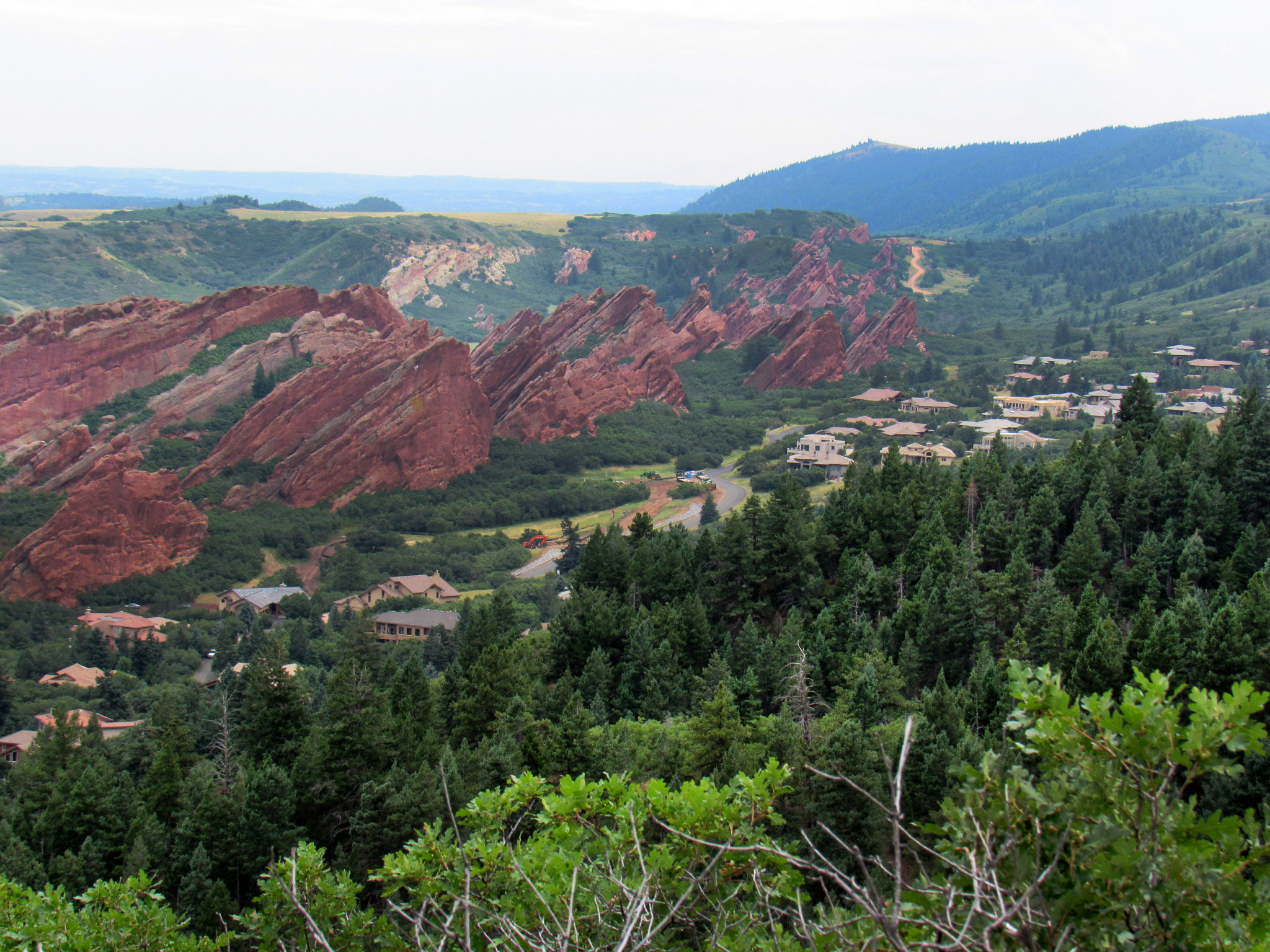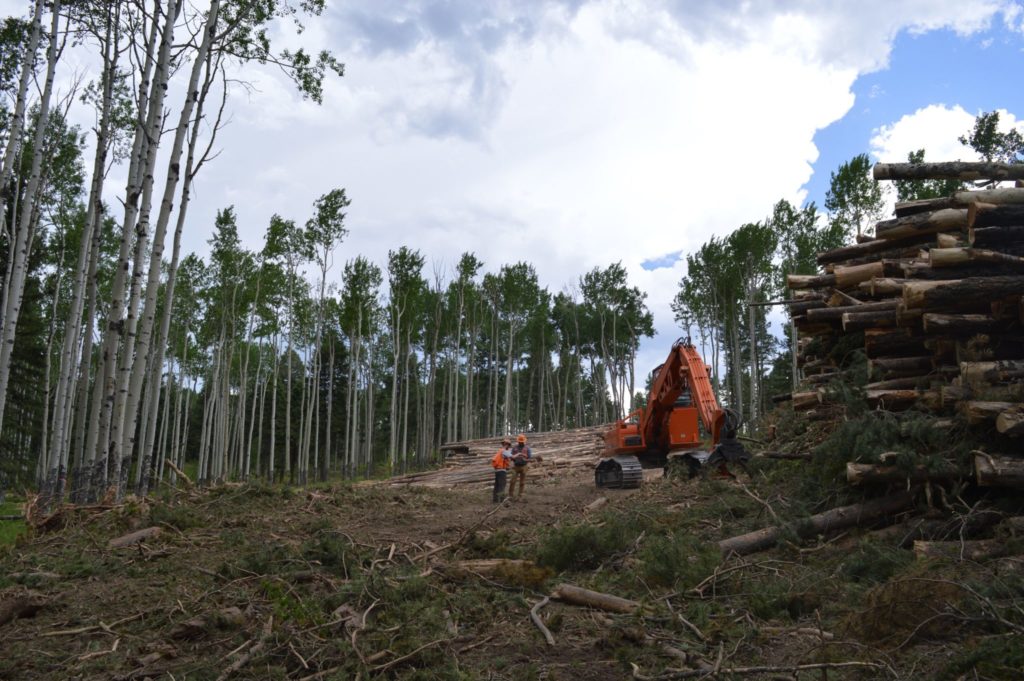
In the Roxborough neighborhood, many residents take an active role in fire mitigation. Photo: Meg Halford, Colorado State Forest Service
There was good news for Colorado’s forests last year. The Colorado State Forest Service implemented numerous projects to protect communities, watersheds and wildlife, while wetter, cooler weather helped tame wildfires and bolster defenses in trees to ward off invading insects, according to the annual report on forest health from the CSFS.
The state forest service presented its report to legislators at the state Capitol March 9, highlighting current conditions across Colorado and how the agency is improving the health of the state’s forests.
New this year, the report takes a regional look at forest health, offering statistics, insect and disease trends, and successes in forest management specific to four quadrants of the state. As always, the report also offers a statewide outlook on trends in insect and disease activity in Colorado’s forests.
“With field offices across the state, we are proud to live and work alongside so many great partners and community members to improve the health of our forests,” said Mike Lester, state forester and director of the Colorado State Forest Service (CSFS). “Together, we are protecting the many values our forests provide, from clean air and water to local jobs in the wood products industry to places to recreate outdoors. By taking a regional look at forest conditions, we can give those folks a more localized assessment of what’s happening to their trees.”
Around the state
The 2019 Report on the Health of Colorado’s Forests focuses on “Celebrating the Diverse Regions of Our State,” highlighting forest management successes in four regions of Colorado, which include:
- Northwest: To help protect residents from wildfire, over the last three years the CSFS has created fuel breaks on 1,150 acres of private and federal forests in the wildland-urban interface around Steamboat Springs. This work not only reduced the risk of wildfire for residents, it created wildlife habitat, protected the Yampa River watershed and improved forest health.
- Northeast: Through the Heavens Project near Conifer, the CSFS and partners showed the collective benefits of private landowners coming together to achieve common goals. Working with members of the Upper South Platte Partnership, the state forest service removed woody fuels from over 350 acres across five adjacent properties. Through this project, the CSFS protected homes, forests and water resources from wildfire, while ensuring the harvested timber became wood products.
- Southeast: The CSFS is making the most of beetle-killed trees in Fremont County, ensuring dead Engelmann spruce on Waugh Mountain find new purpose as wood products. The state forest service worked with a contractor to harvest dead spruce from state land on the mountain, salvaging the wood and producing 1.3 million board feet of timber – enough to build 114 homes.
- Southwest: The CSFS is guiding landowners affected by the Spring Creek Fire through the long-term recovery process, including providing education about recovery options, site visits and technical advice. The 2018 fire – the third largest in state history – destroyed 147 homes and burned 108,000 acres in the Sangre de Cristo Mountains and surrounding area.

Foresters Max Erickson and John White assess wood harvested during the Heavens Project, near Confier. Photo: Nate Beckman, CSFS
Statewide outlook
Along with the regional overview, the 2019 report offers a statewide update on forest conditions.
Highlights include:
- Across Colorado last year, wetter, cooler weather helped tame wildfires and bolster defenses in trees to ward off invading insects. Ample precipitation helped trees produce enough sap to resist insects entering through the bark, providing a natural defense to insect attacks.
- The winter of 2018-19 brought a robust snowpack to the mountains of Colorado, resulting in an abundance of snow slides in high-elevation forests. Heavy tree accumulation at the base of these slides is now cause for concern about bark beetle-caused mortality in coming years.
- For the eighth consecutive year, Colorado’s most widespread and destructive forest insect pest was the spruce beetle. A total of 89,000 acres of active infestations occurred in the state’s high-elevation Engelmann spruce forests in 2019.
- Populations of roundheaded pine beetle, along with closely associated bark beetles, continued to affect ponderosa pine forests in Dolores County, with 22,000 acres impacted in 2019.
Each year, the forest health report provides information to the Colorado General Assembly and residents of Colorado about the health and condition of forests across the state. Information for the report is derived from an annual aerial forest health survey by the CSFS and U.S. Forest Service, Rocky Mountain Region, as well as field inspections, CSFS contacts with forest landowners and special surveys.
Read more on forest insects and disease from the 2019 aerial detection survey: https://col.st/Goi8C
Copies of the 2019 report are available at all CSFS field offices. A PDF of the report, interactive map and insect and disease data searchable by county are available at bit.ly/COForestHealth2019.
The Colorado State Forest Service (CSFS) provides professional forestry assistance, wildfire mitigation expertise and outreach and education to help landowners and communities achieve their forest management goals. The CSFS is a service and outreach agency of the Warner College of Natural Resources at Colorado State University and provides staffing for the Division of Forestry within the Colorado Department of Natural Resources. For more information, visit csfs.colostate.edu.